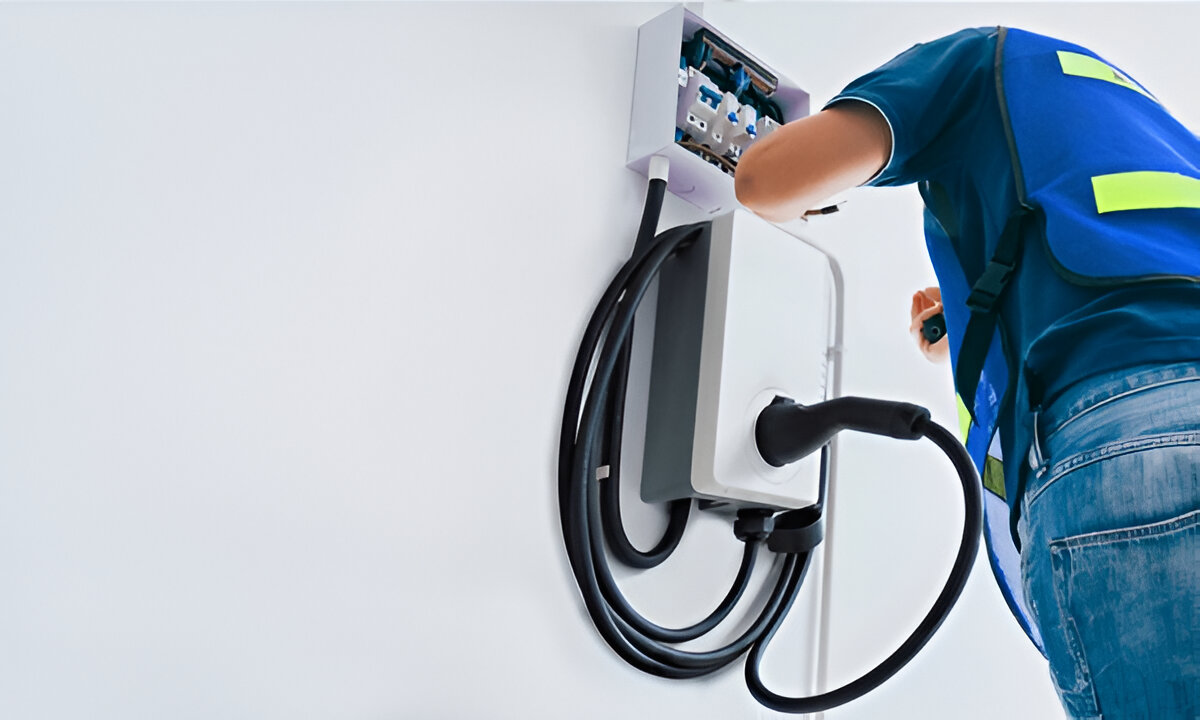Many car owners consider installing electric chargers at home as electric vehicles (EVs) become more popular. The ease and cost savings of having a charging station at home are clear. However, for a smooth and safe installation, it’s essential to be well-prepared. An electric car charger installation in Salt Lake City or Kaysville, Utah, should start with a few basic steps. Follow this guide to prepare your home for the installation.
Understand Your Charging Needs
Understanding your particular electric charging requirements is the first step in preparing for your electric car charger installation. The charger you choose will depend on the vehicle type you own and how often you drive. Different EVs have different charging capabilities.
There are three ways to charge: Level 1, Level 2, and DC fast charging. Level 1 chargers are the slowest choice and use a standard 120-volt outlet. If you drive only a short distance every day, this may be fine for you. Most people choose a Level 2 charger for home use, which charges much more quickly and uses a 240-volt plug.
Talk to your Salt Lake City, Utah, electrician about which charger will work best for your electric vehicle and whether your home’s electrical system can handle it. If you want a faster Level 2 charger, your electrician must check whether your current electrical system can handle the extra load.
Assess Your Home’s Electrical System
Assessing your home’s electrical system is essential before installing an electric car charger. Electric vehicle chargers, especially Level 2 chargers, require a lot of power, and older electrical systems may be unable to handle the extra load.
First, check your electrical panel to see if it can handle the extra load. If the panel in your home is old or not big enough, you may need to get a new one. A skilled electrician in Kaysville, Utah, can look at your panel and tell you if it needs to be upgraded.
Sometimes, you may need to build a connection for your EV charger. This keeps the charger working well and prevents messing up other electrical systems in your home. Your electrician can help you through the process and make the necessary changes if you need them.
Choose the Right Location for the Charger
When you are getting your home ready, the location of your charger is a crucial factor. Whether in a garage, carport, or driveway, the best location for an EV charger is simple for your vehicle to reach. However, you should also ensure the installation is safe and easy to use daily.
When choosing the location, consider the length of the charging cable and whether it will reach your vehicle. Also, think about where the electrical plugs are located and how easy it is to reach your electrical panel. As the charger gets closer to your electrical panel, running the wires will take less time and cost less money.
Your Salt Lake City, Utah, electrician can advise you on the best location for the charger based on your home’s design. They will also ensure that the installation meets all safety standards and that the location follows all local rules.
Obtain the Necessary Permits
Often, licenses are needed to install an electric car charger. This is especially true if the installation involves significant changes to your home’s wiring or electrical system upgrades. Local building codes and laws must be followed to ensure the installation is safe and follows all the rules.
Being a qualified electrician means that you will know how to get a license for your electric car charger installation. This will not only ensure that the installation is legal, but it will also prevent you from getting fined or having trouble selling your home.
Ask your electrician kaysville utah, about the specific permits you need for your job. Your electrician will also ensure that everything is put in safely and adequately.
Plan for Downtime and Disruption
Installing an electric car charger is usually simple, but you should still expect some changes to your daily schedule. Depending on the complexity of the installation, your Salt Lake, Utah, electrician may need to turn off your home’s power for a short time while they make changes to your electrical panel or wiring.
If you’re upgrading your electrical system, such as adding a specialized line or installing a new electric panel, extra work may be involved. Before your electrician starts the installation, make sure to go over the timeline and any possible problems. This will help you make plans and keep things as easy as possible.
Prepare for the Future
As the popularity of electric vehicles grows, getting your home ready for an electric car charger home installation isn’t just about meeting your needs now; it’s also about planning for the future. Installing a charger can raise the value of your home and make it more appealing to buyers in the future, even if you don’t currently own an electric vehicle.
Also, to make your installation future-proof, ensure that your home’s electrical system can handle more chargers or faster charging speeds. In Kaysville, Utah, a professional electrician can help you plan for future improvements that will prepare your home for the rise of electric vehicles.
Conclusion
To make the switch to electric vehicles, getting your home ready for an electric car charger installation is a big step. Careful planning will ensure that the installation goes smoothly and safely, from knowing your car’s needs and evaluating your electric system to choosing the correct location and getting permits.
Hire an expert electrician for a safe, correct, and up-to-code installation in Salt Lake City, Utah, or Kaysville, Utah. By following these steps and getting ready, you can benefit from the ease and cost savings of charging your EV at home.

